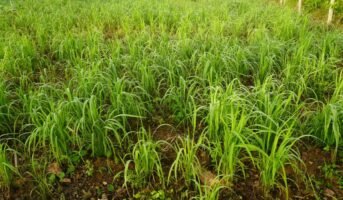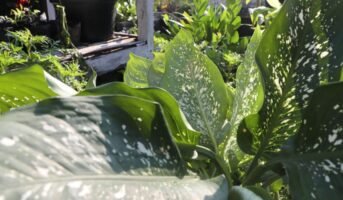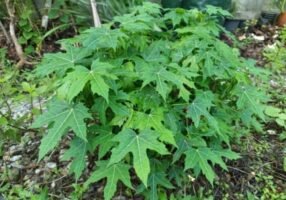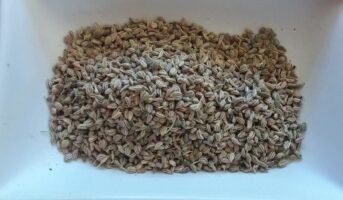Having plants in a household adds to the beauty and aesthetics of the house. Besides that, different plants have different benefits. Many times, even doctors and medical experts advise people to keep plants around in the house for a positive environment. Further, as we already know soil plays a very cardinal role when it comes to planting a certain plant. Soil is not something that does not retain any importance, soil forms the fundamentals of a plant, and it provides nutrition, water, etc for the plants to grow. In the end, all lives are in a way, directly or indirectly dependent on the essence of soil. One cannot imagine the existence of life without soil. Soil is a blend of minerals, of living as well as dead organisms. It also has air and water proportions in it. Various factors determine whether the soil is healthy or not. Some of these are retaining and storing water capacity, air holding capacity, pH of the soil, the color of the soil, texture, and moisture. This blog precisely discusses and enlightens you about the soil’s pH level. It also discusses how to achieve the ideal pH of the soil and how you can test whether your soil is ideal for growing plants.

Source: Pinterest
pH of the soil
Firstly, let’s discuss what pH is. pH is a measure that determines whether something is acidic or alkaline in nature. The pH range has 1 to 14, where a pH of less than 7 is known as acidic and more than 7 is known as alkaline. Further, a pH of 7 depicts that the soil is neutral i.e., neither acidic nor alkaline. An acidic substance releases hydrogen ions (H+) whereas an alkaline substance releases hydroxyl ions (OH-)

Source- Pinterest
Different crops and plants require different pH levels, hence there is no prescribed formula as to what should be the ideal pH of soil. It is very important to know the pH level of soil if you love plants and want a happy gardening experience. Some plants grow best in the 6 to 7 range of pH whereas some grow best in acidic conditions. We must know when a few basic elements like magnesium and calcium retained by soil are replaced by hydrogen ions.
However, it is said that usually, an ideal pH level of the soil is neutral which can at times be a little on the acidic side, say 6 to 7 levels of pH. If you are a plant parent you need to study your plant’s requirements and know how to measure the pH of the soil, as different plants may need different levels of pH. And if you do not match those requirements, your plant may find it very difficult to survive in those conditions. pH determines if a plant will be able to thrive, as a wrong pH may make your plant unable to absorb nutrients and water. In such cases, no fertilizer or organics may help your plant to survive. Testing the pH level of your mini garden can be best done during the fall season. Because when the next spring season comes your plants will be all ready to be bloomed. During the fall season you can also observe the weeds and know if your soil is acidic or alkaline, for instance, chickweed, etc grows in alkaline soil whereas dandelions, etc grow in acidic soil. This is how you can test whether your soil is acidic or alkaline by yourself. This test is only to find out if your soil falls on the acidic or alkaline side, this cannot help you determine the exact measure of the pH level in the soil.

Source: Pinterest
Firstly, you should dig the soil and collect some in a small bowl as a sample. Then you can clean the soil for determining the pH level of the soil. You should remove if there are any sticks or any other waste material in it and break all the lumps. Next, you may have to add water and make the soil into mud. Now you can add vinegar into the mixture and if there is any fizz, bubble, or foam then the soil is alkaline. However, if you add baking soda and there is any fizz, bubble, or foam then the soil will be acidic. Another way to determine this is to use a pH strip instead of vinegar or baking soda. This method will give you a more accurate result. Now if you want to adjust the pH of the soil, you can add limestone to raise the level or you can add sulfur to lower the pH level of the soil.

Source: Pinterest
Conclusion
It can be easily said that an ideal pH of the soil determines the overall health and growth of the plants at your house. Additionally, there are pH level testing kits that come with help on how to conduct the test. However, you can easily determine the basic pH level of soil by the above-mentioned methods in this blog. It is also important to note that factors like rainfall, subsoil acidity, organic matter, and the region where you live also matter. And hence, it would be helpful if you take care of the pH level of the soil, considering these external factors.
FAQs
What is the meaning of pH?
pH is a measure to determine whether a substance is acidic or alkaline in nature. You need to have an ideal pH level in the soil, for your plants to thrive.
What happens if you do not fix the pH of the soil according to the needs of a plant?
pH determines various factors including nutrition and water intake. An unfavorable pH level may lead to the slow death of the plant as it would be difficult for the plant to survive in those conditions.
Where can I buy a pH testing kit?
Nowadays, you can even buy a pH testing kit online through various sites which may sell them.
Is it important to use a pH testing kit?
If you maintain favorable conditions for your plants it is okay if you test it by yourself by using baking soda and vinegar. However, it is healthy to use a kit once in a while to be assured.
Housing News Desk is the news desk of leading online real estate portal, Housing.com. Housing News Desk focuses on a variety of topics such as real estate laws, taxes, current news, property trends, home loans, rentals, décor, green homes, home improvement, etc. The main objective of the news desk, is to cover the real estate sector from the perspective of providing information that is useful to the end-user.
Facebook: https://www.facebook.com/housing.com/
Twitter: https://twitter.com/Housing
Email: [email protected]











